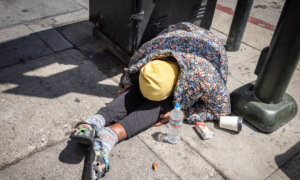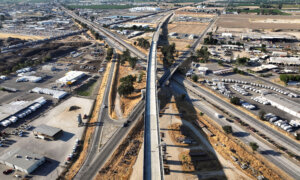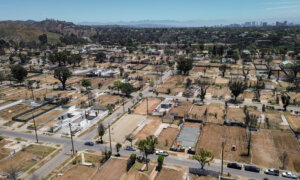Facing a huge budget deficit, Los Angeles city leaders received some advice this week on where to start cutting.
The city’s overspending already stands at more than $288 million at just the halfway point of the fiscal year 2023–2024, according to a report from City Administrative Officer Matt Szabo on March 18.
To control expenses, Mr. Szabo suggested eliminating up to 2,000 vacant positions “at an annual value of $150 million to $200 million.”
Mayor Karen Bass and members of the City Council would need to agree on which positions to remove from the books. The city employs about 50,000 people.
Other recommendations included cuts in departmental expense accounts, reduced infrastructure spending, and higher fees “to achieve full cost recovery for city services.”
The stern report, which said the city “cannot depend on revenue growth to address this year’s overspending,” attributed the overspending mainly to the fire and police departments and the liability claims account.
“Of these three overspending categories, the Liability Claims Account will result in the most significant impact as approved and pending liability payouts are nearing $200 million for the year, or double the budgeted amount,” Mr. Szabo’s report said.
The grim budget news came the same week that Controller Kenneth Mejia announced that one in six city jobs are unfilled, with the job vacancy rate at 17.5 percent.
“City services are stalled at their current levels. Services cannot improve unless jobs get filled,” Mr. Mejia said in a March 20 post on X.
However, at least 4,000 of the vacant jobs have been frozen due to the budget deficit, “meaning these jobs can’t be filled unless approved,” he said.
Mr. Mejia said that “crucial” departments in finance, general services, transportation, and recreation and parks were above the city average for unfilled jobs.
The city controller listed 10 city departments and bureaus with vacancy rates at least 25 percent, including civil rights at 34 percent, youth development at 32 percent, disability at 28 percent, and street lighting at 28 percent.














